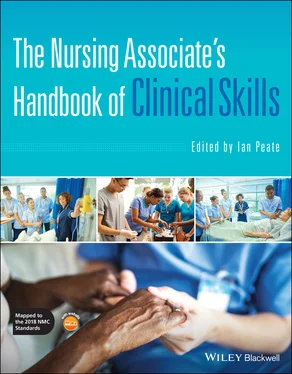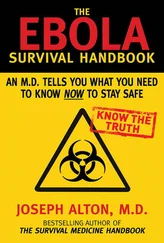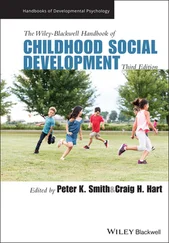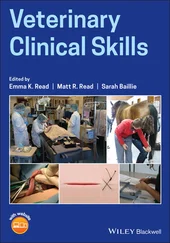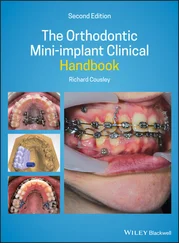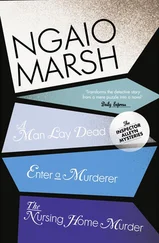The Nursing Associate's Handbook of Clinical Skills
Здесь есть возможность читать онлайн «The Nursing Associate's Handbook of Clinical Skills» — ознакомительный отрывок электронной книги совершенно бесплатно, а после прочтения отрывка купить полную версию. В некоторых случаях можно слушать аудио, скачать через торрент в формате fb2 и присутствует краткое содержание. Жанр: unrecognised, на английском языке. Описание произведения, (предисловие) а так же отзывы посетителей доступны на портале библиотеки ЛибКат.
- Название:The Nursing Associate's Handbook of Clinical Skills
- Автор:
- Жанр:
- Год:неизвестен
- ISBN:нет данных
- Рейтинг книги:4 / 5. Голосов: 1
-
Избранное:Добавить в избранное
- Отзывы:
-
Ваша оценка:
- 80
- 1
- 2
- 3
- 4
- 5
The Nursing Associate's Handbook of Clinical Skills: краткое содержание, описание и аннотация
Предлагаем к чтению аннотацию, описание, краткое содержание или предисловие (зависит от того, что написал сам автор книги «The Nursing Associate's Handbook of Clinical Skills»). Если вы не нашли необходимую информацию о книге — напишите в комментариях, мы постараемся отыскать её.
The Nursing Associate’s Handbook of Clinical Skills
The Nursing Associate’s Handbook of Clinical Skills
The Nursing Associate's Handbook of Clinical Skills — читать онлайн ознакомительный отрывок
Ниже представлен текст книги, разбитый по страницам. Система сохранения места последней прочитанной страницы, позволяет с удобством читать онлайн бесплатно книгу «The Nursing Associate's Handbook of Clinical Skills», без необходимости каждый раз заново искать на чём Вы остановились. Поставьте закладку, и сможете в любой момент перейти на страницу, на которой закончили чтение.
Интервал:
Закладка:
10 Evans, D. (2003) Hierarchy of evidence: a framework for ranking evidence evaluating healthcare interventions, Journal of Clinical Nursing, 12(1): 77–84. doi: 10.1046/j.1365‐2702.2003.00662.x.
11 Feo, R., Conroy, T., Marshall, RJ., Rasmussen, P., Wiechula, R. and Kitson, AL. (2017) Using holistic interpretive synthesis to create practice relevant guidance for person‐centred fundamental care delivered by nurses, Nursing Inquiry, 24(2): e121152. doi: 10.111/nin.12152.
12 Feo, R., Rasmussen, P., Wiechula, R., Conroy, T. and Kitson, A. (2016) Developing effective and caring nurse‐patient relationships, Nursing Standard, 31(28): 54–63. doi: 10.778/ns.2017.e.10735.
13 Freshwater, D. (2007) The therapeutic use of self, in Freshwater, D. (ed.), Therapeutic nursing: improving patient care through self‐awareness and reflection, London: Sage.
14 Freshwater, D. and Stickley, T. (2004) The heart of the art: emotional intelligence in nurse education. Nursing Inquiry, 11(2): 91–98.
15 Gobet, F. and Chassy, P. (2008) Towards an alternative to Benner’s theory of expert intuition in nursing: a discussion paper, International Journal of Nursing Studies, 45(1): 129–139.
16 Health Education England. (2019) Nursing associate and new support role in health care, Health Education England. [online] Available: https://www.hee.nhs.uk/our‐work/nursing‐associates. Accessed September 2019.
17 James, I., Andershed, B., Gustavsson, B. and Ternestedt, B.‐M. (2010) Emotional knowing in nursing practice: in the encounter between life and death, International Journal of Qualitative Studies of Health and Well‐being, 5(5367): 1–15.
18 Johns, C. (2000) Becoming a reflective practitioner, London: Blackwell Science Ltd.
19 Kitson, A., Harvey, G. and McCormack, B. (1998) Enabling the implementation of evidence based practice: a conceptual framework. Quality in Healthcare, 7: 149–158.
20 Koutsopoulou, S., Papathanassoglou, E.D.E., Katapodi, M.C. and Patiraki, E.I. (2010) A critical review of the evidence for nurses as information providers to cancer patients, Journal of Clinical Nursing, 19(5–6): 749–765.
21 Leary, A., White, J. and Yarnell, L. (2014) The work left undone. Understanding the challenge of providing holistic lung cancer nursing care in the UK, European Journal of Oncology Nursing, 18(1): 23–28.
22 Mayer, J.D. and Salovey, P. (1997) What is emotional intelligence? in Salovey, P. & Sluyter, D.J. (eds.) Emotional development and emotional intelligence. Educational implications. New York, NY: Basic Books, 3–34.
23 Mayer, J.D., Salovey, P., Caruso, D.R. and Sitarenious, G. (2001) Emotional intelligence as a standard intelligence, Emotion, 3(1): 232–242.
24 McCormack, B. and McCance, T. (2010) Person‐centred nursing: theory and practice, London: Wiley.
25 Mirhaghi, A., Sharafi, S., Bazzi, A. and Hasanzadeh, F. (2017) Therapeutic relationship: is it still heart of nursing? Nursing Reports, 7(1). doi: 10.4081/nursep.2017.6129.
26 Morley, D. (2016) Applying Wenger's communities of practice theory to placement learning, Nurse Education Today, 39: 161–162.
27 Nursing & Midwifery Council. (2018a) Standards of proficiency for nursing associates. [online] Available: https://www.nmc.org.uk. Accessed October 2019.
28 Nursing & Midwifery Council. (2018b) Code professional standards of practice and behaviour for nurses, midwives and nursing associates. [online] Available: https://www.nmc.org.uk/globalassets/sitedocuments/nmc‐publications/nmc‐code.pdf. Accessed December 2019.
29 Olsen, R.M., Østnor, B.H., Enmarker, I. and Hellzén, O. (2013) Barriers to information exchange during older patients’ transfer: nurses’ experiences, Journal of Clinical Nursing, 22(19–20): 2964–2973.
30 Östman, L., Näsman, Y., Eriksson, K. and Nyström, L. (2019) Ethos: the heart of ethics and health, Nursing Ethics, 26(1): 26–36.
31 Pearson, H. (2013) Science and intuition: do both have a place in clinical decision making? British Journal of Nursing, 22(4): 212–215.
32 Rolston, E.J., Karsten, K., Auditore, A., Gimber, P. and McMillan‐Coddington, D. (2016) Transforming the clinical experience for associate degree nursing students, Teaching and Learning in Nursing, 12(1): 35–38. doi: 10/1016/j.teln.2016.08.007.
33 Schön, D. (1983) The reflective practitioner: how professionals think in action, Aldershot: Arena.
34 Stevens, S. (2018) Ways of knowing and unknowing in psychotherapy and clinical practice, Journal of Trauma and Treatment, 7(1): 418. doi: 10.4172/2167‐1222.1000418.
35 Swanson, K.M. (1991) Empirical development of a middle range theory of caring, Nursing Research, 40(3): 161–166.
36 Watson, J. (1985) The philosophy and science of caring: an essential resource, Colorado, USA: Colorado Association.
37 Wiechula, R., Conroy, T., Kitson, A.L., Marshall, R.J., Whitaker, N. and Rasmussen, P. (2016) Umbrella review of the evidence: what factors influence the caring relationship between a nurse and patient? Journal of Advanced Nursing, 72(4): 723–734. doi: 10.1111/jan.12862.
38 Williams, B. (2015) Enhancing teaching relationships through therapeutic use of self, The Journal of Mental Health Training, Education and Practice, 10(1): 61–70. doi: 10.1108/jmhtep‐04‐2014‐008.
7 Escalating Concerns
Tom Walvin
University of Plymouth, UK
Chapter Aim
The aim of this chapter is to introduce the reader to the methods that may be used when escalating concerns about a patient.
Learning Outcomes
By the end of this chapter, the reader will be able to:
Describe the role of the nursing associate in escalating concerns about a patient
Use a structured method to escalate concerns
Discuss the challenges of communication when escalating concerns about a patient
Test Yourself Multiple Choice Questions
1 What does ‘SBAR’ stand for?Situation, Background, Assessment, ReactionSafety, Background, Assessment, Ring for HelpScene, Background, Assessment, RespondSituation, Background, Assessment, Recommendation
2 In an acute hospital in the United Kingdom, which number can be called to summon emergency medical help for a patient?999922229993333
3 If concerned about a patient after completing an assessment, which healthcare professional could the nursing associate first escalate concerns to for clinical decision‐making and advice?Junior doctorSpeciality registrarRegistered nurseContinue to manage the patient yourself
4 What does ABCDE stand for in the context of deteriorating patient care?Airway, Breathing, Circulation, Deformity, EscalateAirway, Breathing, Circulation, Disability, EscalateAirway, Breathing, Circulation, Deformity, ExamineAirway, Breathing, Circulation, Disability, Exposure
5 Where can detailed information about the patient’s admission assessment, tests and initial diagnosis be found?Medical notesNursing handover sheetNursing care record summaryAmbulance clinical record
Introduction
The Nursing and Midwifery Council (NMC) educational standards require nursing associates to both understand how to escalate concerns to other appropriate healthcare professionals for expert help and how to recognise when a person’s health has deteriorated and escalate as needed (Nursing & Midwifery Council 2018a).
This chapter will develop understanding of both of these by introducing different methods for escalating concerns about patients, discussing how to escalate effectively and describing the pitfalls in communication so that these can be avoided. The NMC Code (Nursing & Midwifery Council 2018b) also contains requirements with regards to deteriorating patients and escalation. The nursing associate is required to maintain effective communication with colleagues, to make a timely referral to another practitioner when any action, care or treatment is required and to arrange, wherever possible, for emergency care to be accessed and provided promptly.
Читать дальшеИнтервал:
Закладка:
Похожие книги на «The Nursing Associate's Handbook of Clinical Skills»
Представляем Вашему вниманию похожие книги на «The Nursing Associate's Handbook of Clinical Skills» списком для выбора. Мы отобрали схожую по названию и смыслу литературу в надежде предоставить читателям больше вариантов отыскать новые, интересные, ещё непрочитанные произведения.
Обсуждение, отзывы о книге «The Nursing Associate's Handbook of Clinical Skills» и просто собственные мнения читателей. Оставьте ваши комментарии, напишите, что Вы думаете о произведении, его смысле или главных героях. Укажите что конкретно понравилось, а что нет, и почему Вы так считаете.
